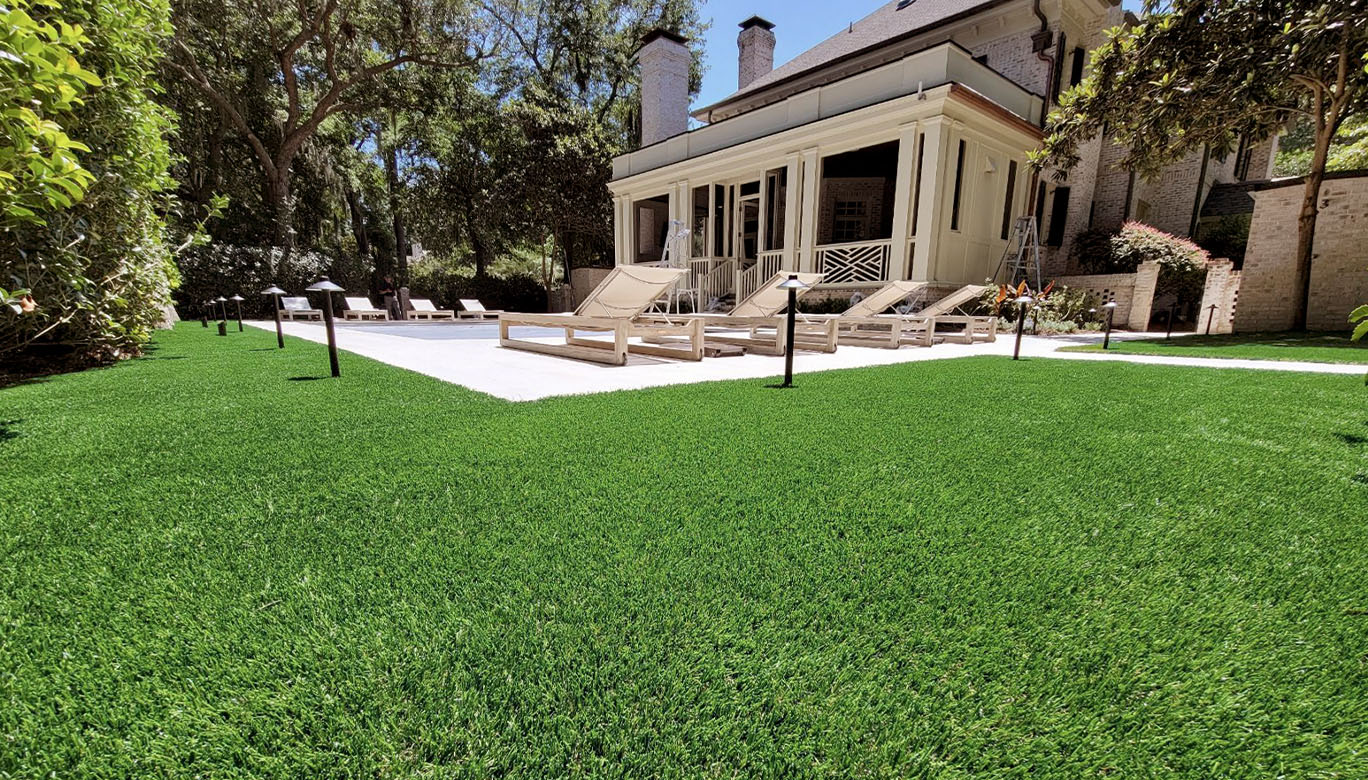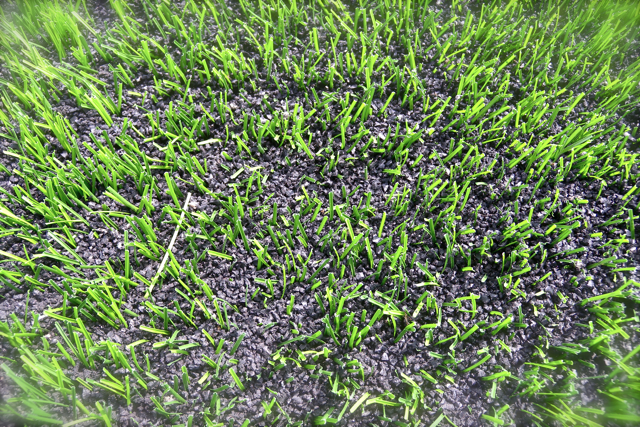Tailored Turf Installation Phoenix AZ for Residences, Companies, and Recreational Spaces
Tailored Turf Installation Phoenix AZ for Residences, Companies, and Recreational Spaces
Blog Article
Delve Into the Environmental Advantages of Opting for Synthetic Grass Solutions
The fostering of synthetic grass remedies provides a compelling possibility to deal with pushing ecological obstacles. By dramatically lowering water usage and decreasing the application of hazardous chemicals, these choices not just promote sustainable landscape design however also secure local environments. Additionally, the lower carbon footprint related to reduced upkeep activities contributes to a more sustainable approach to land administration. The implications of these benefits expand past simple conservation efforts, increasing inquiries regarding their lasting impact on habitat conservation and total ecological equilibrium. Discovering these measurements exposes an intricate interplay worth taking into consideration.
Water Conservation Perks
One of the most significant advantages of fabricated turf is its capability to preserve water. In comparison, man-made grass does not need watering, dramatically minimizing the general demand for water resources.
By eliminating the need for routine watering, synthetic grass adds to sustainable landscape techniques and assists minimize the environmental effect of too much water consumption. The preservation of water expands to the reduction of drainage, which can lead to soil disintegration and waterway contamination.
Furthermore, the installment of synthetic grass allows property owners and towns to assign water resources a lot more efficiently, concentrating on essential usages such as alcohol consumption water and farming. The change towards synthetic grass not just promotes accountable water use yet additionally lines up with wider ecological objectives intended at preserving natural sources.
As neighborhoods significantly focus on sustainability, the water conservation benefits of synthetic grass provide a compelling instance for its fostering in business and property landscape design tasks.
Reduced Chemical Use
The change to synthetic grass considerably reduces the reliance on chemical therapies commonly used in all-natural yard upkeep. Typical lawn monitoring typically involves the application of herbicides, pesticides, and fertilizers to promote growth and control pests. These chemicals can pose threats to human health and wellness, neighborhood wildlife, and the environment, adding to dirt and water contamination.
On the other hand, artificial lawn gets rid of the requirement for these damaging substances. As soon as mounted, it needs minimal upkeep, mostly consisting of normal cleaning and infrequent infill replenishment. This decrease in chemical usage not just profits the prompt atmosphere however also adds to wider ecological stability. By minimizing the release of synthetic compounds into the community, synthetic grass promotes much healthier dirt and water systems.
Furthermore, the lack of chemical runoff related to synthetic grass setups aids protect neighborhood waterways from contamination, sustaining aquatic life and preserving biodiversity. Artificial turf companies phoenix. As areas increasingly prioritize sustainable techniques, choosing for man-made lawn presents a feasible remedy that aligns with environmental preservation objectives. Via this shift, property owners can delight in rich eco-friendly spaces without compromising environmental health and wellness, leading the means for a more sustainable future
Reduced Carbon Impact

Moreover, the setup of synthetic grass can lead to considerable water preservation. Natural grass need considerable amounts of water for irrigation, which not only includes in the carbon impact connected with water removal and therapy but additionally stress neighborhood water sources. In comparison, fabricated grass needs marginal upkeep, needing no watering, thus dramatically lowering water use and its connected power prices.
Furthermore, the durability of artificial grass adds to its lower carbon effect. With a life-span of approximately 15 years or more, the demand for regular substitutes is reduced, causing much less waste and lower energy consumption in production and getting rid of standard lawn alternatives. On the whole, synthetic grass offers a lasting alternative for environmentally mindful landscape design.
Habitat Preservation
Environment conservation is an essential consideration in the dispute over landscape design selections, specifically when comparing synthetic grass to natural yard. Natural yard yards often need considerable maintenance, consisting of using fertilizers, herbicides, and chemicals, which can detrimentally affect neighborhood environments. These chemicals can leach right into the dirt and waterways, hurting indigenous flora and animals and interfering with neighborhood environments.
Artificial lawn removes the demand for dangerous chemicals, thus shielding neighboring wildlife and maintaining the honesty of bordering communities. The installment of man-made turf can lead to the conversion of former yard locations into even more biodiverse landscapes, such as pollinator yards or indigenous plant locations, which can sustain neighborhood wild animals.
Eventually, the shift to synthetic lawn not just preserves water and minimizes that site maintenance efforts however also fosters a much more unified partnership in between human activities and the native environment, promoting habitat conservation at the same time.
Long-Term Sustainability
Long-term sustainability is a crucial variable in assessing the advantages of synthetic grass over conventional lawn yards. Among one of the most substantial advantages of artificial lawn is its sturdiness; it can last up to 15-20 years with very little maintenance, whereas natural turf requires frequent reseeding and substitute. This long life reduces the need for constant sources, such as water, fertilizers, and chemicals, which are crucial for keeping a healthy grass lawn.
Furthermore, synthetic grass adds to a decrease in carbon discharges related to grass care equipment. Traditional grass frequently need gas-powered mowers, leaners, and blowers, all of which contribute to air pollution. Turf installation phoenix az. On the other hand, synthetic lawn removes the demand for such devices, advertising a cleaner atmosphere
Moreover, the manufacturing of synthetic grass increasingly uses recycled products, boosting its sustainability profile. As producers take on environment-friendly methods, the environmental impact of man-made lawn remains to diminish.

Conclusion
The adoption of man-made turf solutions presents substantial environmental benefits, including considerable water preservation, lowered dependence on hazardous chemicals, and a reduced carbon footprint. Artificial lawn aids in maintaining natural habitats by reducing land disturbance and promoting lasting sustainability via the use of resilient products. Jointly, these aspects emphasize the capacity of fabricated turf to add positively to environmental wellness and offer a feasible choice to standard landscaping techniques in an increasingly resource-conscious globe.
In comparison, synthetic turf does not require watering, substantially lowering the general demand for water sources. By decreasing the release of artificial substances right into the ecosystem, synthetic turf advertises much healthier soil and water systems.
Furthermore, the setup of artificial grass can result in considerable water preservation. In contrast, artificial lawn needs minimal upkeep, calling for no watering, consequently substantially decreasing water usage and its connected energy prices.

Report this page